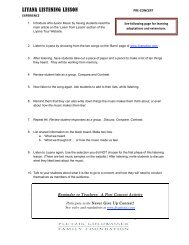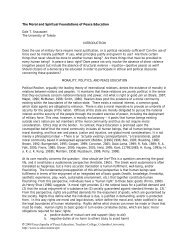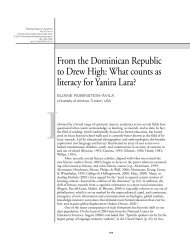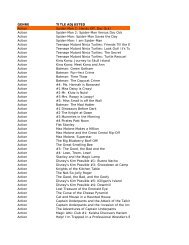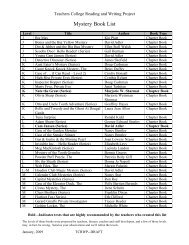TC Today - Teachers College Columbia University
TC Today - Teachers College Columbia University
TC Today - Teachers College Columbia University
You also want an ePaper? Increase the reach of your titles
YUMPU automatically turns print PDFs into web optimized ePapers that Google loves.
Ony<br />
Location<br />
For disaster preparedness researcher Tom Chandler,<br />
geography is a key variable in the survival equation<br />
by Joe Levine<br />
mong Tom Chandler’s heroes is the 19th<br />
century English physician John Snow,<br />
one of the fathers of the field of epidemiology. In 1854—<br />
nearly a decade before the advent of germ theory, when<br />
people still thought diseases were caused by a “miasma” of<br />
foul air—Snow traced a cholera outbreak in the city of Soho<br />
to specific contaminated water pumps.<br />
“By using a map of the city’s pumps and looking at<br />
where people were dying, he figured out that it was a y<br />
water-borne disease, not airborne,” says Chandler (Ph.D.,<br />
’09, M.A., ’00). “It really illustrates how a map can y<br />
solve problems.”<br />
Solving problems with maps is Chandler’s own forte.<br />
As a research associate at the National Center for Disaster<br />
Preparedness (NCDP) at<br />
<strong>Columbia</strong>’s Mailman School<br />
of Public Health, he spends<br />
his days analyzing natural<br />
and human disasters—from<br />
Hurricane Katrina to last<br />
year’s earthquake in Haiti, to<br />
the recent catastrophic events<br />
in Japan that have resulted in<br />
partial nuclear meltdown—<br />
and the geographical factors<br />
that often help set them in<br />
motion or determine their<br />
ultimate outcome. Boyish<br />
looking, with glasses and<br />
unruly brown hair, Chandler<br />
projects the friendly politeness<br />
of an Eagle Scout—which can<br />
PINPOINTING AN OUTBREAK An original map of an<br />
1854 cholera outbreak in Soho, made by the epidemiologist<br />
John Snow.<br />
make it all the more jarring when he talks about running<br />
computer-simulations of 10-kiloton nuclear explosions<br />
in New York City. But there may be few people better<br />
equipped to think about forestalling or mitigating such horrific<br />
what-ifs.<br />
“I’ve always been interested in how to take computer<br />
technologies and enhance the ways that information can<br />
be visualized,” he says. “Since 9/11, I’ve focused on how<br />
programs can highlight the specific needs of communities<br />
during disasters.”<br />
The past five years have brought a quantum leap in such<br />
technologies—most notably Google Earth, which, through<br />
satellite and aerial photography, enables viewers to see details<br />
as small as specific streets and houses; and real-time geographic<br />
information, such as public<br />
health, weather and traffic data<br />
which, as the company itself<br />
puts it, “reveal relationships,<br />
patterns, and trends.” Google<br />
Earth, launched right before<br />
Hurricane Katrina, helped<br />
many survivors determine<br />
whether their homes were y<br />
still standing.<br />
A similar technology,<br />
deployed in Haiti immediately<br />
following the earthquake, pinpointed<br />
the largest concentrations<br />
of rubble, helping rescue<br />
workers make the most of the<br />
72-hour period known as the<br />
maximum survival window.<br />
44 T C T O D A Y l s p r i n g 2 0 1 1<br />
PHOTOGRAPH BY Samantha Isom



